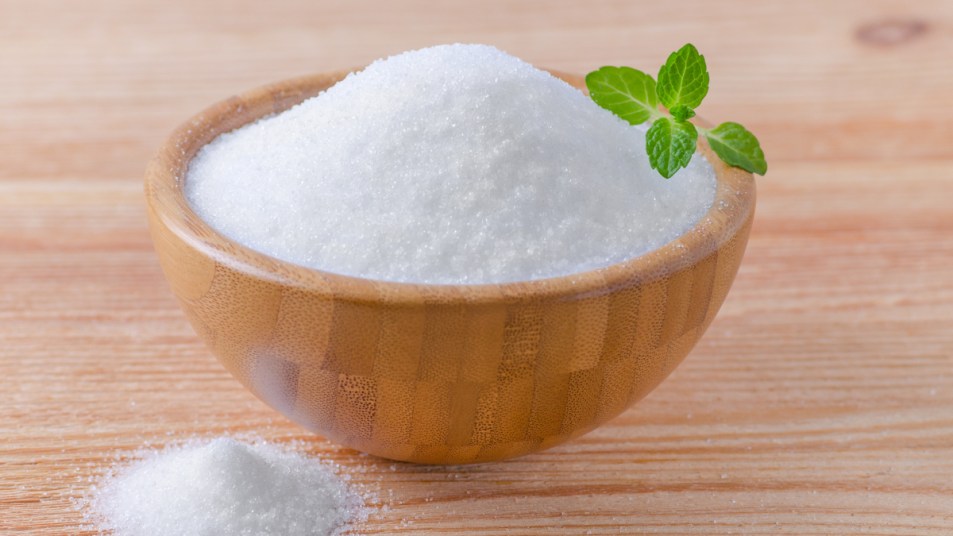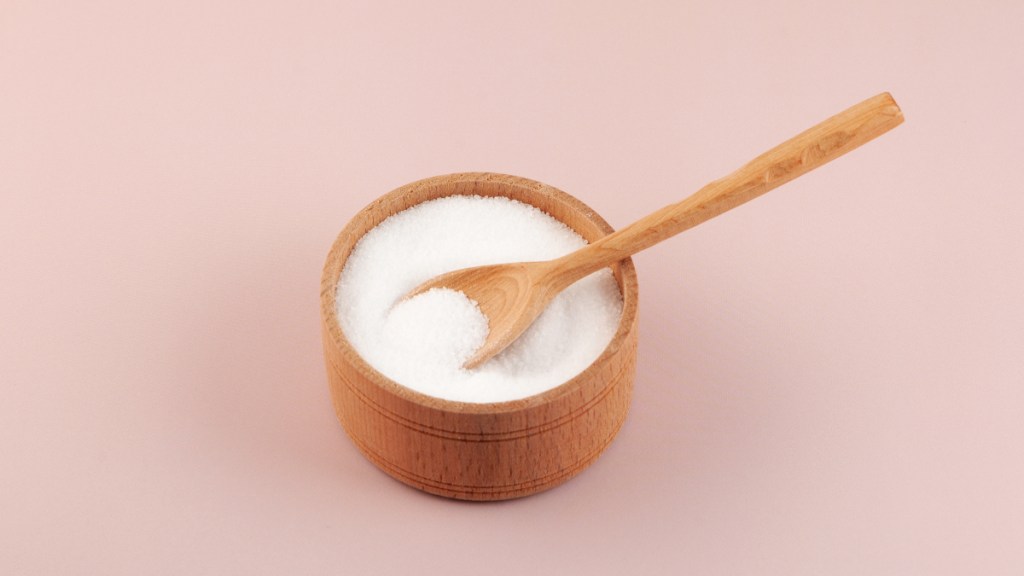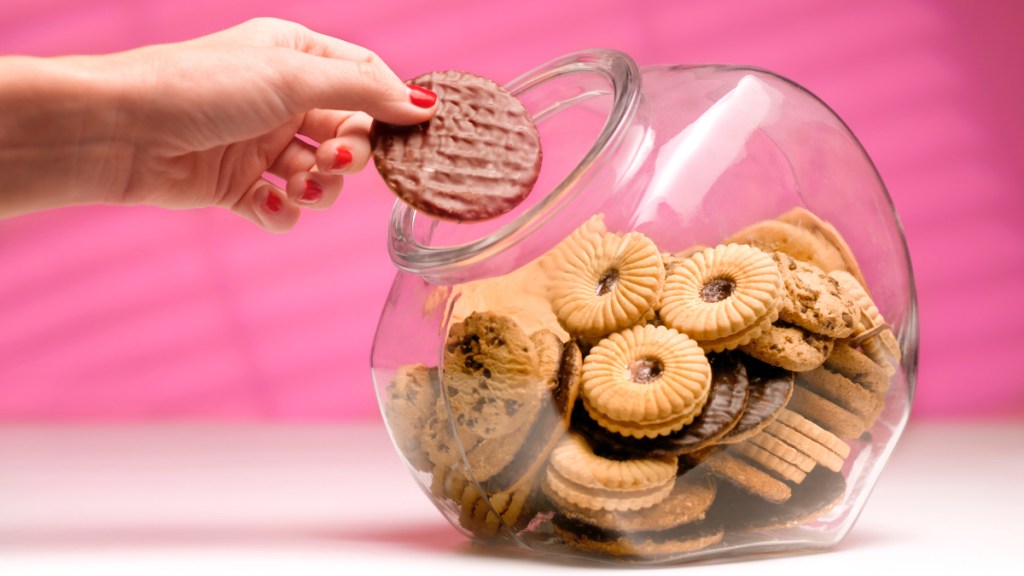Cutting Back on Sugar? Docs Say Sucralose Is OK In Moderation, But May Have Sneaky Side Effects
The artificial sweetener can actually ramp up cravings and appetite

If you’re trying to cut back on sugar, but your sweet tooth hasn’t gotten the memo, you might find yourself reaching for foods sweetened with sugar substitutes instead. These can deliver the sweet flavor you crave without spiking your blood glucose the way regular sugar would. But emerging research suggests that one popular sweetener, sucralose, may actually have an unexpected impact on blood glucose levels. So, does sucralose raise blood sugar? Here’s what you need to know.
What is sucralose?
Sucralose is an artificial sweetener found in many sugar-free or zero-calorie foods and beverages. That includes soft drinks, chewing gum, baked goods and desserts. Sold under the brand name Splenda, sucralose is derived from standard table sugar — but it’s 600 times sweeter, so you only need a tiny amount to sweeten your food.
Sucralose is a non-nutritive sweetener, which means it doesn’t provide any calories or other nutrients. But because dextrose and maltodextrin are used as bulking agents in Splenda, it does contain a small amount of added sugar (less than one gram per serving).
This can be beneficial for people with diabetes or anyone looking to limit their sugar intake. Added sugar intake has been linked to insulin resistance and cardiovascular risk factors. So it’s no surprise the American Heart Association recommends that women should limit added sugars to 6 tsp. per day, or 25 grams. Considering a single 12-ounce can of cola contains 36 grams of added sugar, staying within that limit can be a challenge. Opting for “sugar-free” treats sweetened with sucralose can help satisfy sweet cravings without spiking your blood sugar.

Related: Women Who Use the Natural Sweetener Allulose Burn 1,134% More Belly Fat Than Those Using Sucralose
Does sucralose raise blood sugar levels?
“Sucralose typically does not affect blood glucose levels like regular sugar does,” says Reza Nazemi, MD, endocrinologist at Cedars-Sinai and co-founder of World Top Docs. “Sucralose can be beneficial for those looking to reduce caloric intake and manage weight, as it is much sweeter than sugar but with virtually no calories.”
While sucralose won’t significantly raise your blood sugar, it can still have an impact on the way your body processes sugar. Research in Diabetes Care suggests sucralose can affect insulin response and may cause a small increase in blood sugar levels.
However, your body can’t digest sucralose, so how exactly does sucralose raise blood sugar? Researchers believe that sweet taste receptors in the mouth may play a role in triggering the insulin response. But Dr. Nazemi notes that research is still limited, and the amount of sucralose you’d need to consume to see a noticeable difference in blood sugar levels varies from person to person.
“For now, moderate use of sucralose as a sugar substitute is generally considered safe for most people,” Dr. Nazemi says. “Moderation in all food choices — including the use of sweeteners — is key to maintaining healthy blood sugar levels.”
The downsides of sucralose
Sucralose is one of six artificial sweeteners authorized by the FDA for use as a food additive. But there are a few reasons you may want to consider minimizing your intake.
1. Sucralose supercharges your sweet tooth
Yale research suggests sucralose and other artificial sweeteners may actually make sugar cravings harder to kick. “There is concern about artificial sweeteners perpetuating a preference for sweet tastes, which might affect dietary choices,” Dr. Nazemi explains.

2. Sucralose affects your gut health
“Many non-nutritive sweeteners can disrupt the normal gut microbiota and aggravate various bowel disorders,” says Deborah Jones-Shook, CRNP, nurse practitioner at UM St. Joseph Medical Center. A study in Microorganisms found that consuming 48 mg of sucralose daily for 10 weeks could induce gut dysbiosis, an imbalance of microorganisms in the gut, in healthy adults. (GI trouble? Click through to see the 10 best foods for gut health.)
3. Sucralose ramps up appetite
“There is a suggestion that sucralose stimulates appetite, making you eat more,” Jones-Shook says. Normally, when you taste something sweet, it means you’re consuming sugar. Your brain’s reward centers associate that sweet taste with incoming energy. But when you consume something sweet without calories, your brain tries to compensate for that missing energy.
Research in Cell Metabolism suggests that may cause your appetite to go into overdrive. In fact, a study in the Journal of the American Medical Association found folks who consumed a sucralose drink had stronger cravings and an increased appetite compare to those who drank water or a sucrose drinks. Women who sipped the sucralose drink consumed more calories at their next meal, too.
How to balance your blood sugar without sucralose
While artificial sweeteners like sucralose can help you cut back on calories and added sugars, there are still drawbacks. Like most things in life, that means moderation is key. “There is a growing body of evidence that suggests that consumption of non-nutritive sweeteners such as sucralose can increase risk of adverse health outcomes, including type 2 diabetes, obesity, depression and cardiovascular disease,” Jones-Shook says.
Bottom line: Simply replacing all your favorite sweets with “sugar-free” versions isn’t the best way to control blood sugar. And it may even have long-term effects on your health. Fortunately, there are better ways to keep your blood sugar in check. Here’s how:
1. Eat an apple ‘appetizer’
Whole fruit can satisfy your sweet tooth while providing much-needed vitamins, minerals and dietary fiber. And research in Nutrients suggests eating fruit can also boost gut health, help with weight management and lower your risk of heart disease and type 2 diabetes. But apples offer a unique benefit to boot. According to a study in Foods, eating an apple “appetizer” before a meal helped to slow the spike in blood sugar after the meal.

2 Ditch diet soda
UC San Diego research suggests diet soda can alter the way your brain processes sweet tastes. And another study found that frequent diet soda drinkers had higher BMI and larger waist circumference than non-drinkers. Jones-Shook suggests sticking with water and other unsweetened beverages, like tea, instead.
Related: The Chlorogenic Acid in Coffee May Help Balance Blood Sugar and Ward Off Diabetes
3. Stroll around the block
Exercise is incredibly effective for managing blood sugar. According to the American Diabetes Association, physical activity can lower blood glucose levels for up to 24 hours or more after your workout by improving insulin sensitivity. “Try to get at least 30 minutes of exercise, at least 5 days per week,” Jones-Shook advises. Two simple ways to clock more steps? Add 5 minutes to your regular morning walk with your dog, or park your car farther away from the store when running errands. (Tip: If pain makes it difficult to enjoy regular strolls, click through to see how to outsmart lower back pain when walking.)

4. Watch for sneaky sweeteners
Processed foods may contain hidden non-nutritive sweeteners, Jones-Shook cautions. You can even find them in unexpected places like canned fruit, light yogurt, packaged bread and pasta sauce. The wording on product labels can be deceiving, so keep in mind that foods labeled “no sugar added” may still contain artificial sweeteners and other sugar substitutes.
For more ways to steady your blood sugar and ward off diabetes:
The Chlorogenic Acid in Coffee May Help Balance Blood Sugar and Ward Off Diabetes
These 9 Simple (and Delicious!) Food Swaps Significantly Lower Diabetes Risk, Say MDs
This content is not a substitute for professional medical advice or diagnosis. Always consult your physician before pursuing any treatment plan.













